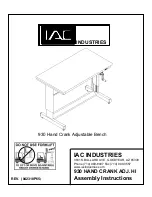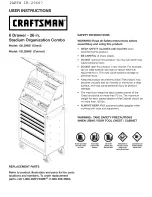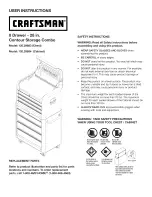
4
Installation
DXi6500 and DXi6700 Site Planning Guide
•
Combine or Separate Network Traffic
- Network traffic is either separated
according to specific network needs or combined on a single IP address for
simplicity. The DXi6500 and DXi6700 has the capability of separating data traffic,
replication traffic, and management traffic. Each traffic type can have its own IP
address or they can be combined on a single IP address.
Some DXi network settings and configuration combinations can have wide ranging and
subtle effects throughout the server and storage ecosystem. Possible negative effects of
improper configuration range from sub-optimal performance to “silent” network
problems that are hard to diagnose. In general, the simplest configuration that meets
your requirements is preferred. The guidelines below are presented in sequence from
basic through advanced.
All configuration items described are located in the DXi6500 and DXi6700 remote
management pages, on the
Configuration > Network > IP
page and the
Configuration > Network > Segmentation and Bonding
page.
The recommendations and configurations presented below assume that the DXi6500
and DXi6700 system is being deployed in an environment that is not VLAN managed, or
in a VLAN managed environment that is properly configured for visibility to the DXi.
If your specific requirements cannot be met using any of the configurations described
below, please contact Quantum Customer Support for additional options.
Chapter 5, “DXi6500 and DXi6700 Configuration,” in the
DXi6500 and DXi6700 User’s
Guide
contains descriptions of the network segmentation options, however, refer to the
following sections for network segmentation recommendations:
•
General Recommendations
•
DXi6500 Segmentation Options
•
DXi6500 Performance Guidelines
General
Recommendations
When considering the use of network segmentation, refer to the following general
recommendations:
Avoid Segmentation Where Possible
Segmentation options are provided for use in environments where it is required to
separate management, data, and replication traffic, but in most cases this is not
necessary and simply introduces unneeded configuration complexity.
Avoid LACP
While the use of LACP (Link Aggregation Control Protocol) to manage the allocation of
traffic across bonded DXi ports is supported as an advanced configuration option, its
use is discouraged. LACP configuration can be complex, and improper configuration can
render your system inaccessible.





































